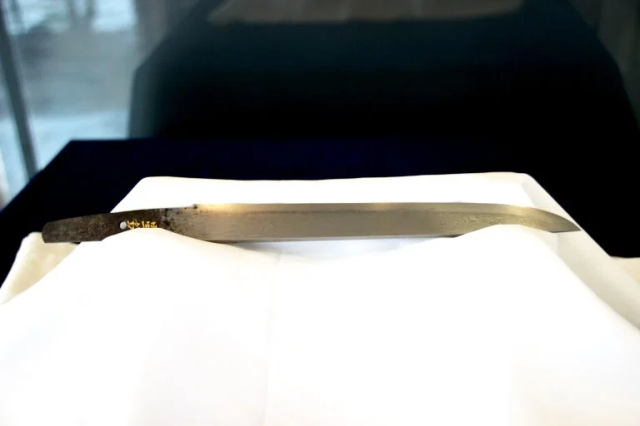
One of Japan’s most beautiful blades is now on display, and owes its existence to some dude who just wanted to eat some potatoes and pickles.
Roughly 130 years ago, a farmer in what’s now Japan’s Toyama Prefecture was digging for potatoes when he came across an unusual stone. Even appraisers from the Osaka mint couldn’t tell what it was, and it spent the next several years being used as a tsukemono ishi, basically a large stone placed on top of vegetables as part of the pickling process.
However, this mysterious mineral was destined for greater things. In 1895, geologists from the Ministry of Agriculture and Commerce determined that the stone was a meteorite, which they would dub the Shirahagi Meteorite (Birch Meteorite). It was purchased by Enomoto Takeaki, a samurai who would go on to play a key role in the creation of Japan’s first modern navy and also serve as Minister of Communications, Education, Foreign Affairs, as well as two separate terms as Minister of Agriculture and Commerce.
Instead of using the meteorite to make some pickles, Enomoto decided to use it to make some swords. Enlisting the services of swordsmith Okayoshi Kunimune, Enomoto commissioned five blades, two long swords and three tanto (literally “short swords,” but often closer in length to daggers) to be forged from the Shirahagi Meteorite. One of the tanto is housed at the Toyama Science Museum in Toyama City, and we took a trip to see its celestial craftsmanship for ourselves.
▼ Field reporter Meg arrives at the Toyama Science Museum
Of the five meteorite blades, collectively known as the Ryuseito (literally “comet swords”), the higher quality of the two katana was presented by Enomoto to the current crown prince of Japan, who would later become Emperor Taisho, who reigned from 1912 to 1926. The remaining four were handed down to Enomoto’s descendants. The second katana is now owned by Tokyo University of Agriculture (which grew out of an institution Enomoto founded). As for the three tanto, one is in the possession of Ryugu Shrine in Otaru, on the island of Hokkaido, one’s whereabouts are unknown, and one is the blade seen here, kept as part of the Toyama Science Museum’s collection.
The tanto isn’t on permanent display, but visitors can feast their eyes on it between now and October 14. On our visit, we also had the chance to talk to Mr. Hayashi, the museum’s astronomy curator, who told us more about what makes the blade so special.
For starters, it’s not just the origin of the metal in the Ryuseito that makes it different. Meteoric iron has a nickel content of about 10 percent, which is higher than terrestrial iron, and also less carbon. That actually makes it somewhat difficult to work with, since a lower carbon content makes the metal comparatively resistant to hardening during quenching. Because of that, the ryuseito aren’t made from meteoric iron alone, but an alloy that’s 70 percent meteoric iron and 30 percent tamahagane, the iron sand-rich metal used for regular katana.
▼ The Ryuseito’s scabbard
In his journals, Enomoto says that the Ryuseito “cut well,” but Hayashi is somewhat skeptical of the claim. Even with their tamahagane content, the Ryuseito have less carbon than similar swords forged from occurring-on-earth components, and so while “meteorite sword” sounds like the sort of thing that should let you slay dragons and cleave ogres, it might not actually be the most combat effective blade, not that Hayashi and his colleagues have actually tried cutting anything with the priceless historical artifact which it’s doubtful anyone could repair (it took Okayoshi three years to complete the five swords).
However, there is one advantage to the use of meteoric iron, which is that it produces uniquely beautiful hamon (tempering marks) along the blade’s surface. The Ryuseito had to be forged at higher-than-normal temperatures, and the final result is stark black waves that flow over the metal.
▼ Hamon totally unlike the ones we saw at the Evangelion and Katana exhibit in Tokyo
Hayashi was also able to dispel a rumor about the Ryuseito. Some people claim that unlike most notable Japanese swords, which bear the smith’s inscribed signature on their inner hilt, the Ryuseito are unmarked. That’s not the case, though, as we can clearly see the kanji for “Kunimune” engraved into the sword, as well as a solid-gold inlay reading seitetsu, or “star iron.”
So while the Ryuseito may or may not do you much good in a duel, it’s undeniably awesome to look at, and well worth stopping by the Toyama Science Museum to see if you happen to be in the area. As for the fifth Ryuseito, we’ll just have to keep our fingers crossed that it turns up, but if a farmer can find a meteorite while looking for potatoes, hopefully someday someone will find the long-lost fifth sibling sword too.
Museum information
Toyama Science Museum / 富山市科学博物館
Address: Toyama-ken, Toyama-shi, Nishinakanomachi 1-8-31
富山県富山市西中野町1丁目8-31
Open 9 a.m.-5 p.m.
Closed September 17-19
Admission 520 yen (US$4.80)
Website
Photos ©SoraNews24
● Want to hear about SoraNews24’s latest articles as soon as they’re published? Follow us on Facebook and Twitter!
[ Read in Japanese ]
Follow Casey on Twitter, where he wishes he could go back in time and tell his younger self ‘One day, you’ll write multiple professional articles about tamahagane.’”
[ Read in Japanese ]

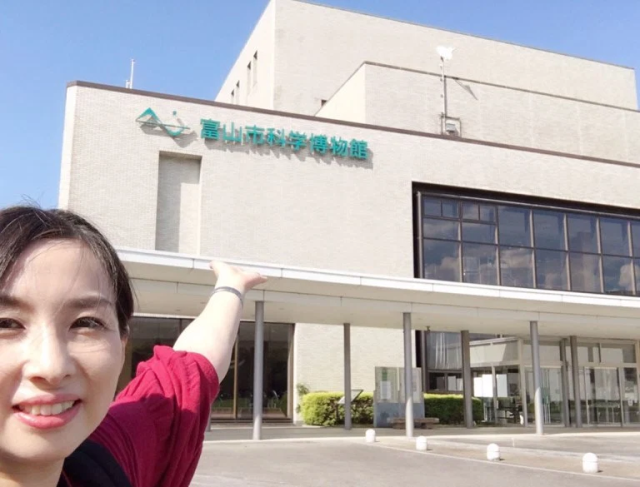
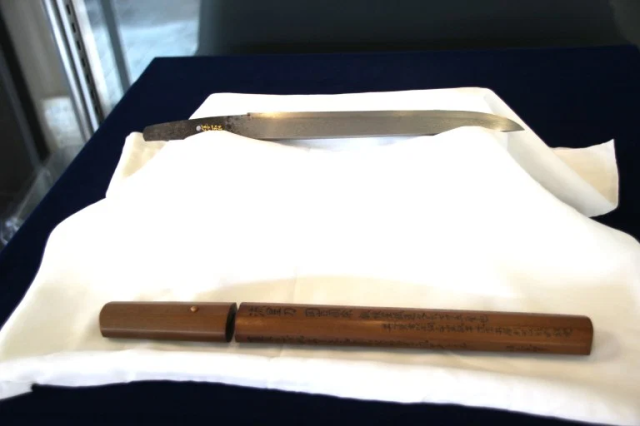
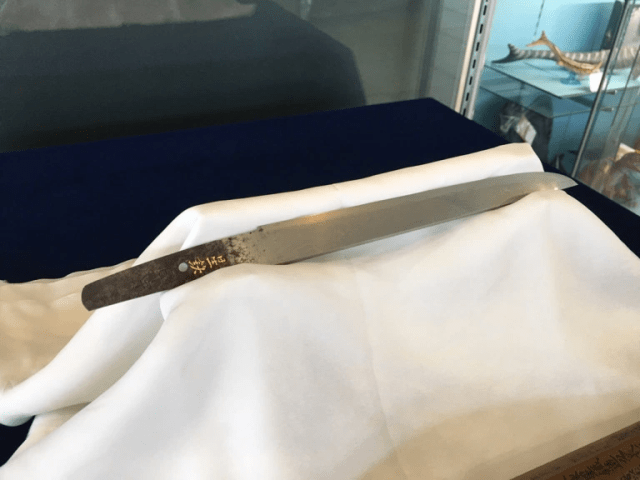

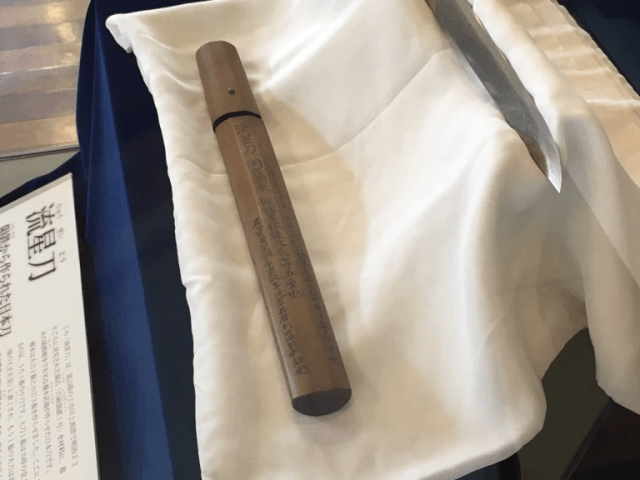
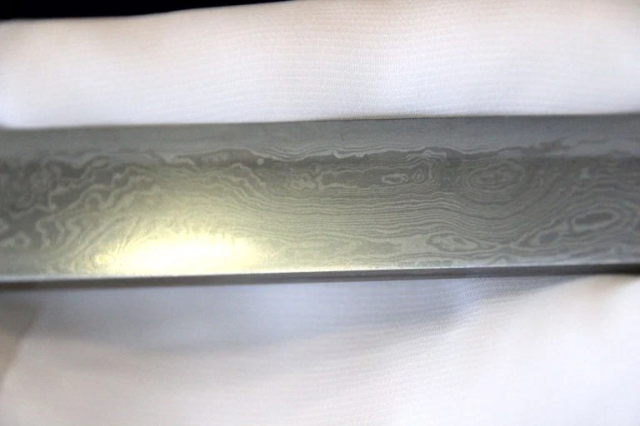
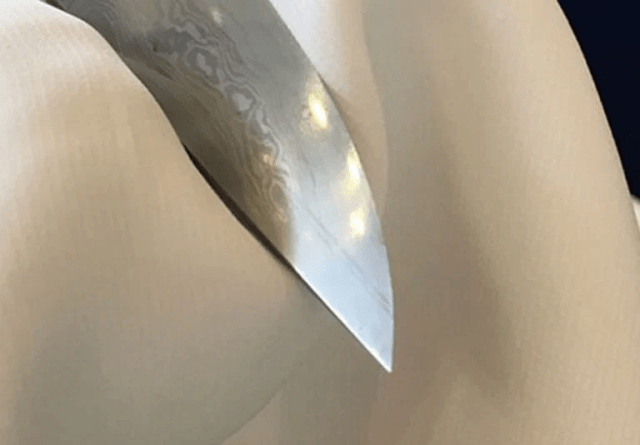
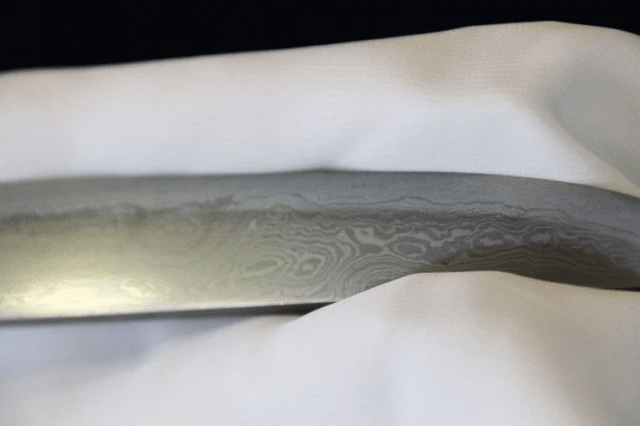
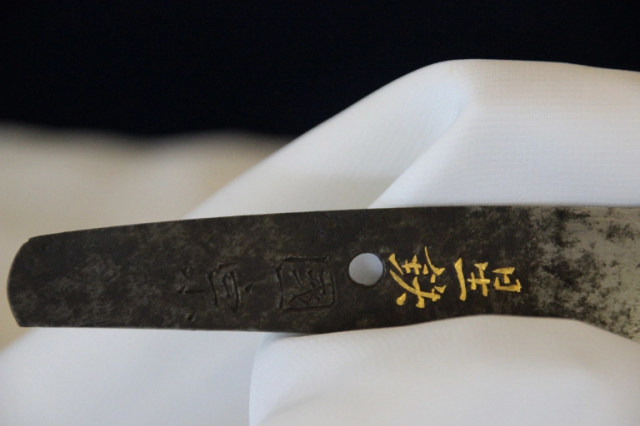
 Final Fantasy artist Yoshitaka Amano anthropomorphizes katana made from a meteorite
Final Fantasy artist Yoshitaka Amano anthropomorphizes katana made from a meteorite Legendary crescent moon katana, one of Japan’s Five Swords Under Heaven, now on display in Tokyo
Legendary crescent moon katana, one of Japan’s Five Swords Under Heaven, now on display in Tokyo Amazing exhibition of Japan’s legendary “cursed katana” is going on right now【Photos】
Amazing exhibition of Japan’s legendary “cursed katana” is going on right now【Photos】 How did samurai swords and armor evolve over time?【Part 2】【Photos】
How did samurai swords and armor evolve over time?【Part 2】【Photos】 Japan’s legendary Brother Katana might not be brothers after all? Investigating the mystery【Pics】
Japan’s legendary Brother Katana might not be brothers after all? Investigating the mystery【Pics】 Hayao Miyazaki says Happy New Year to Studio Ghibli fans with new art for Year of the Horse
Hayao Miyazaki says Happy New Year to Studio Ghibli fans with new art for Year of the Horse The best Starbucks Japan Frappuccinos we want to drink again in 2026
The best Starbucks Japan Frappuccinos we want to drink again in 2026 We revisited Sweets Paradise after a decade to see if Japan’s dessert buffet still delivers
We revisited Sweets Paradise after a decade to see if Japan’s dessert buffet still delivers Starbucks Japan unveils new S’mores Frappuccino and latte for Christmas 2025
Starbucks Japan unveils new S’mores Frappuccino and latte for Christmas 2025 Japan’s otoshidama tradition of giving kids money at New Year’s gets a social welfare upgrade
Japan’s otoshidama tradition of giving kids money at New Year’s gets a social welfare upgrade Shogun arrested in Japan for being a peeping Tom
Shogun arrested in Japan for being a peeping Tom Studio Ghibli releases Kodama forest spirits from Princess Mononoke to light up your home
Studio Ghibli releases Kodama forest spirits from Princess Mononoke to light up your home Japan’s oldest largetooth sawfish in captivity back on display in Mie Prefecture
Japan’s oldest largetooth sawfish in captivity back on display in Mie Prefecture More people in Japan quit sending New Year’s cards and many have started to regret it
More people in Japan quit sending New Year’s cards and many have started to regret it These are Osaka’s three best digital rail passes for travelers
These are Osaka’s three best digital rail passes for travelers Starbucks Japan ready to get Year of the Horse started with adorable drinkware and plushies【Pics】
Starbucks Japan ready to get Year of the Horse started with adorable drinkware and plushies【Pics】 Cyberpunk anime meets traditional culture in Ghost in the Shell gold leaf Japanese changing screens
Cyberpunk anime meets traditional culture in Ghost in the Shell gold leaf Japanese changing screens 7 great places to see Mt. Fuji from without having to climb it
7 great places to see Mt. Fuji from without having to climb it Hello Kitty Choco Egg figures are an adorable trip through three periods of Japanese pop culture【Pics】
Hello Kitty Choco Egg figures are an adorable trip through three periods of Japanese pop culture【Pics】 7-Eleven Japan’s ramen-cooking robot whipped us up a bowl of noodles【Taste test】
7-Eleven Japan’s ramen-cooking robot whipped us up a bowl of noodles【Taste test】 We found possibly the quietest Japanese-style hotel in Tokyo’s bustling Shinjuku district
We found possibly the quietest Japanese-style hotel in Tokyo’s bustling Shinjuku district Sumo Sanrio! Hello Kitty and pals team up with Japan Sumo Association for new merch【Pics】
Sumo Sanrio! Hello Kitty and pals team up with Japan Sumo Association for new merch【Pics】 More Than a Capsule Stay: Why Solo Travelers Choose “global cabin Yokohama Chinatown”
More Than a Capsule Stay: Why Solo Travelers Choose “global cabin Yokohama Chinatown” 7-Eleven Japan starts new temporary luggage storage service in over 300 branches
7-Eleven Japan starts new temporary luggage storage service in over 300 branches Disillusionment at Tsukiji’s tourist-target prices led us to a great ramen restaurant in Tokyo
Disillusionment at Tsukiji’s tourist-target prices led us to a great ramen restaurant in Tokyo Starbucks teams up with 166-year-old Kyoto doll maker for Year of the Horse decorations【Photos】
Starbucks teams up with 166-year-old Kyoto doll maker for Year of the Horse decorations【Photos】 Tokyo considering law requiring more trash cans following litter increase in heavily touristed area
Tokyo considering law requiring more trash cans following litter increase in heavily touristed area Tokyo’s Tsukiji sushi neighborhood asks tour groups to stay away for the rest of the month
Tokyo’s Tsukiji sushi neighborhood asks tour groups to stay away for the rest of the month Tokyo event lets you travel back in time, for free, to celebrate 100 years since Showa era start
Tokyo event lets you travel back in time, for free, to celebrate 100 years since Showa era start Sanrio theme park in Japan announces plans to expand into a Sanrio resort
Sanrio theme park in Japan announces plans to expand into a Sanrio resort Japan may add Japanese language proficiency, lifestyle classes to permanent foreign resident requirements
Japan may add Japanese language proficiency, lifestyle classes to permanent foreign resident requirements Stamina-destroying “Paralysis Noodles” are Tokyo’s newest over-the-top ramen innovation
Stamina-destroying “Paralysis Noodles” are Tokyo’s newest over-the-top ramen innovation Survey asks foreign tourists what bothered them in Japan, more than half gave same answer
Survey asks foreign tourists what bothered them in Japan, more than half gave same answer Japan’s human washing machines will go on sale to general public, demos to be held in Tokyo
Japan’s human washing machines will go on sale to general public, demos to be held in Tokyo Japan’s deadliest food claims more victims, but why do people keep eating it for New Year’s?
Japan’s deadliest food claims more victims, but why do people keep eating it for New Year’s? We deeply regret going into this tunnel on our walk in the mountains of Japan
We deeply regret going into this tunnel on our walk in the mountains of Japan Major Japanese hotel chain says reservations via overseas booking sites may not be valid
Major Japanese hotel chain says reservations via overseas booking sites may not be valid Put sesame oil in your coffee? Japanese maker says it’s the best way to start your day【Taste test】
Put sesame oil in your coffee? Japanese maker says it’s the best way to start your day【Taste test】 No more using real katana for tourism activities, Japan’s National Police Agency says
No more using real katana for tourism activities, Japan’s National Police Agency says Starbucks Japan reveals new sakura drinkware collection, inspired by evening cherry blossoms
Starbucks Japan reveals new sakura drinkware collection, inspired by evening cherry blossoms Updated cherry blossom forecast shows extra-long sakura season for Japan this year
Updated cherry blossom forecast shows extra-long sakura season for Japan this year Demon-slaying Dojigiri, one of Japan’s Five Swords Under Heaven, now on display at Kasuga Shrine
Demon-slaying Dojigiri, one of Japan’s Five Swords Under Heaven, now on display at Kasuga Shrine Real-life Rurouni Kenshin katana forged based on sword of series’ most merciless villain【Photos】
Real-life Rurouni Kenshin katana forged based on sword of series’ most merciless villain【Photos】 Historical katana dessert knives turn your sweet snacks into a delicious duel【Photos】
Historical katana dessert knives turn your sweet snacks into a delicious duel【Photos】 This hotel has one of the coolest katana collections in Japan, and admission is totally free【Pics】
This hotel has one of the coolest katana collections in Japan, and admission is totally free【Pics】 Sword of one of Japan’s last samurai discovered in house in America
Sword of one of Japan’s last samurai discovered in house in America Dojigiri, the millennium-old katana said to have slain a demon, is now on display in Tokyo【Pics】
Dojigiri, the millennium-old katana said to have slain a demon, is now on display in Tokyo【Pics】 Swords of famous samurai reborn as beautiful kitchen knives from Japan’s number-one katana town
Swords of famous samurai reborn as beautiful kitchen knives from Japan’s number-one katana town Real-life Rurouni Kenshin reverse-blade katana, forged by master swordsmith, now on display【Pics】
Real-life Rurouni Kenshin reverse-blade katana, forged by master swordsmith, now on display【Pics】 “2D vs. Katana” exhibition shows off recreations of swords from anime and video games in Osaka
“2D vs. Katana” exhibition shows off recreations of swords from anime and video games in Osaka Cruel angels, beautiful blades: The amazing sword of the Evangelion and Katana exhibition【Photos】
Cruel angels, beautiful blades: The amazing sword of the Evangelion and Katana exhibition【Photos】 “Katana steel cookies” are the latest sweet treat from Japan’s samurai sword capital【Taste test】
“Katana steel cookies” are the latest sweet treat from Japan’s samurai sword capital【Taste test】 How did samurai swords and armor change over time?【Part 1】【Photos】
How did samurai swords and armor change over time?【Part 1】【Photos】 Genuine Muramasa blade and Muromachi katana on display at Tokyo’s Touken Ranbu store【Photos】
Genuine Muramasa blade and Muromachi katana on display at Tokyo’s Touken Ranbu store【Photos】 Stay at an old samurai residence in the heart of a “Little Kyoto” warrior town
Stay at an old samurai residence in the heart of a “Little Kyoto” warrior town
Leave a Reply